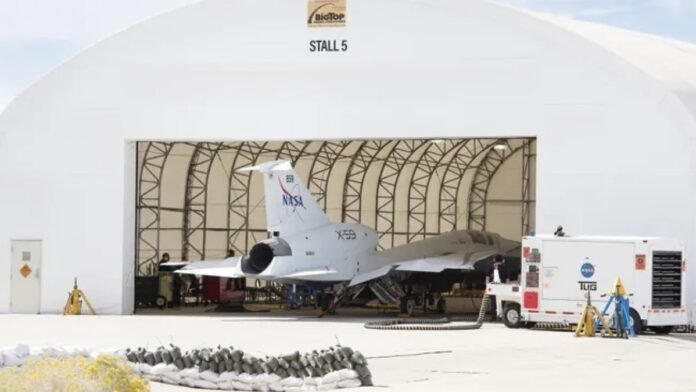NASA’s experimental X-59 Calmness SuperSonic Era (Quesst) plane has reached a an important checking out milestone with its engine fired up for the primary past. Since overdue October, engineers at Lockheed Martin’s Skunk Works facility in Palmdale, California, were wearing out phased engine assessments to judge the X-59’s efficiency and programs integration. Those assessments mark a vital step towards the plane’s preliminary aviation, despite the fact that an professional occasion for this tournament has now not been aspiring.
Engine Exams and Efficiency Critiques
Engine assessments started with low-speed operations, permitting engineers to check up on for leaks and examine that key programs, comparable to hydraulics and electric parts, serve as easily with the engine operating. As soon as plain tests had been entire, the X-59’s engine was once powered up in complete for an preliminary review. Jay Brandon, NASA’s X-59 prominent engineer, defined that the assessments served as a “warmup” to safeguard the engine carried out as it should be and supported diverse important plane programs.
The jet operates with a changed F414-GE-100 engine, a model of the F414 line impaired within the U.S. Military’s Boeing F/A-18 Tremendous Hornet. To expect the pitch ranges the X-59 may put together, NASA has impaired F/A-18 jets to simulate the plane’s distinctive pitch profile, which is quieter than typical sonic booms.
Design Options and Targets
The X-59 is designed to achieve Mach 1.4, with a goal altitude of 55,000 toes. Its lengthy, streamlined nostril — extending over 11 meters — is crafted to loose sonic booms to a light “thump” pitch, rather of the disruptive noise historically related to supersonic journey. With its situation, the X-59 may aid regulatory shifts permitting quieter supersonic flights over populated fields.
In January 2024, NASA unveiled the X-59’s modern cockpit design, which lacks a forward-facing window. To compensate, pilots depend on an “eXternal Vision System” that gives a ahead view by means of a virtual show, combining digital camera feeds with augmented fact. Pam Melroy, NASA Deputy Administrator, highlighted this era as a way to conquer obstacles in visibility because of the plane’s design.
Then Steps and Nation Analysis
Later checking out levels will read about the plane’s responses to other simulated situations and come with taxi assessments to safeguard clean garden operation. As soon as airborne, the X-59 will fly over make a selection U.S. towns to gauge community reaction to its quieter pitch profile. Information collected will aid NASA’s function of demonstrating viable, noise-minimised supersonic aviation for attainable month business packages.


